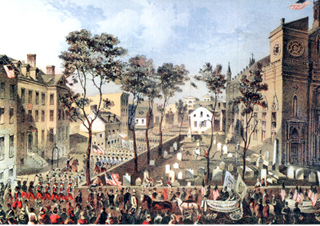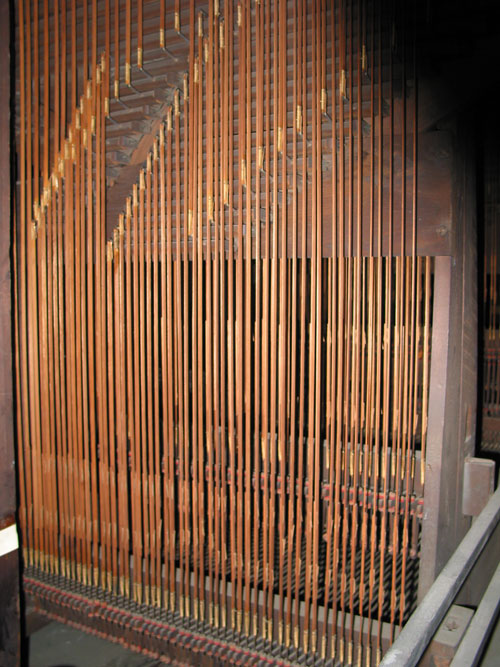The Erben Organ is a time machine from an altogether different era. As a point of entry, it is helpful to consider the cultural context of New York in the mid-nineteenth century.
The Organ in Industrial Society (1)
A million people inhabited New York City in 1860, making it the nation's largest city. However, the city was struggling to reach a position of artistic prominence worthy of its power. The New York Philharmonic, established in 1842, was the city's only more or less permanent orchestra. In 1862, another orchestra added greatly to the musical life of the city, organized and conducted by Theodore Thomas. He initiated a series of summer-night concerts at Terrace Gardens in 1866, at which he tried to increase the substance of his programs and the appreciation of serious music without forfeiting popular appeal.
Still in the future was The Metropolitan Opera, which did not open until 1883; the first professorship of music, created by Columbia University and filled by Edward MacDowell, came only in 1896. So, from the time of installation of the organ until there was a professor of music in New York City, a generation had already passed.
In the 19th century, in no place could the cultural awakening of America be felt as strongly as in New York. Looking across the Atlantic for musical leadership, America's leading musicians were either natives of Europe or spent time studying there: Theodore Thomas was a native of Germany, for instance. Organists were imported from England and abroad. American natives began to spend years studying in Germany, England, and France as professional standards began to effect music performance and budgets. This was no less felt in New York city's churches. The following program, from the inaugural recital of the organ in 1869, shows many of these currents.
In 1861, Thomas Hutchinson's American Music Directory listed more that a hundred churches with organs; all but four of them were made in New York City. In the last couple decades of his life, Henry Erben continued to hold on to his position of influence among organ builders in New York. His peek of productivity occurred in the decade preceding the Civil War; he closed his Baltimore branch in 1863. Erben had been very popular in the South, and the war's effect on his business was greater than for other builders.
An 1876 periodical reported that the total amount paid by 350 New York City churches was "not less than half a million dollars a year"; the organist of Trinity Church, for instance, was paid an annual salary of $3,500.
(1) O. Ochse, A History of the Organ in the United States.

